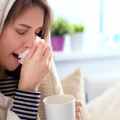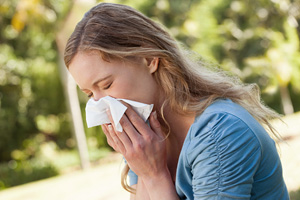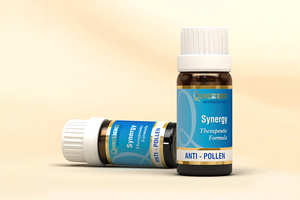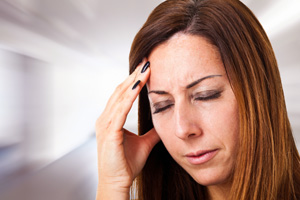Essential Oils For Hay Fever
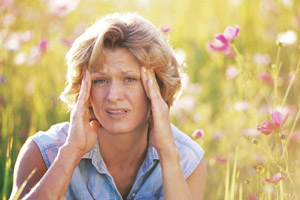 Here in the U.K. we are finally able get out and about again after the long and arduous lockdown. Now that we are able to enjoy the fresh springtime air and sunshine it certainly is a welcome change.
Here in the U.K. we are finally able get out and about again after the long and arduous lockdown. Now that we are able to enjoy the fresh springtime air and sunshine it certainly is a welcome change.
For many people, the arrival of the warmer weather along with the easing of lockdown may prompt a shopping trip to stock up on sunscreen and sunglasses in preparation for lots of time outdoors.
But for some people, this change of season is not so welcome since it signals the return of the annual nightmare known as the hay fever season.
The term ‘hay fever’ is misleading since it is very rarely caused by hay, and there is not a fever associated with it. Nonetheless, it does aptly describe the misery that millions of people suffer when the pollen count is high. More correctly, this condition is called ‘seasonal allergic rhinitis’ (SAR) since it generally occurs in spring and summer, depending on which airborne substance is causing the allergy.
The main culprits
For UK sufferers, grass pollen is the most common allergen accounting for over 90% of victims. This season begins in late May and peaks in June and July, eventually ending around the middle of August. The worst time for grass pollen is usually early morning until around 10 a.m. and late afternoon into the early evening.
Tree pollen can be a trigger for up to 25% of sufferers in the UK, with birch, alder, hazel, elm and ash all producing pollen at varying times of the year, although spring tends to be the worst time. Weather conditions often determine how much pollen is in the air from day to day, because pollens which are produced by grasses, weeds and trees are readily carried by the wind.
For some people, weeds and other plants, as well as spores from moulds and fungi, can be a trigger. There are over 20 different moulds known to cause an allergic reaction with individuals, and they may be allergic to just one, or in some instances, several of them. And it should be remembered that moulds can survive indoors as well as outdoors. The worst time for these allergens is June to November.
Typical hay fever symptoms
Since the allergy may be caused by various airborne substances, and everyone is an individual, this condition can affect people quite differently. However, it is likely you may experience one or more of the following symptoms:
- Nasal congestion
- Runny nose
- Frequent sneezing
- Itchy and bloodshot eyes
- Itchy throat mouth and nose and ears
- Loss of smell
- Severe wheezing, rhinitis can trigger nose bleeding
- Difficulty in concentrating
Histamine reaction
The pollens from trees, grass or weeds can cause the immune system to produce antibodies and release a natural substance called histamine that is present in all cells throughout the body. Unfortunately, histamine irritates all the upper respiratory passages such as the nose, sinus, throat and eyes, making them swell and produce most of the typical hay fever symptoms.
Antihistamine medication helps to relieve these symptoms by inhibiting the action of histamine on nasal and eye tissues, but it also causes drowsiness when first taken. Operating dangerous machinery or driving must be avoided until you know how badly you are affected by the medication. And although symptoms can be controlled quite effectively with allergy medication, you can’t get rid of the allergy itself. So what else can be done?
Fragrant relief
Thankfully, there are lots of essential oils that bring some welcome relief to this miserable condition and several ways of using them too. Vaporising essential oils such as chamomile roman, eucalyptus radiata, lavender, pine or peppermint around the home and office can help to keep the sinuses clear.
If you are already a bit congested then a steam inhalation with any of these oils will really clear your nasal passages and remember this method of use is actually one of the best home treatments available for all types of congestion.
Inhaling a few drops of essential oil placed on a tissue will bring quick relief from the effects of pollen when you are away from home and outdoors. The oils instantly get to work soothing and clearing the respiratory passageways, and for many people, this is the most effective way to use essential oils to combat this debilitating condition.
Calming chamomile
When it comes to soothing the ravages of hay fever, nothing beats the therapeutic, calming power of roman chamomile essential oil. Used individually it is extremely soothing to itchy, irritated and sensitive sinuses, and it’s also highly effective when blended with other essential oils too. Its anti-allergenic properties are highly beneficial to counteract many of the effects of pollen.
Blend roman chamomile with eucalyptus, lemon or lavender essential oils for instant and effective relief. The essential oils that can help to relieve hay fever symptoms most are listed in the side panel (right), it is just a case of finding which oils work the best for you. In my experience, roman chamomile produces a very powerful synergy with each one of these essential oils.
How to use essential oils for hay fever
Essential oils can also be added to a fragrance-free cream or lotion base so that when you apply this as a moisturizer in the morning you will also be getting the benefits of a hay fever treatment too. You only need to add five drops of essential oil for every 30mls of carrier base to create a protective treatment in your skincare.
Massaging the sides of the nose, forehead, temples and the back of the neck with a blend of oils in a carrier also brings soothing comfort for many sufferers. A gentle massaging action around the nose really helps to soothe those streaming eyes and mucous membranes. And a warm relaxing bath with any of the essential oils from our list is yet another easy way to help relieve the worst symptoms.
Other forms of complementary or alternative therapies that can help relieve the misery of hay fever include acupuncture, herbal remedies, homoeopathy, immunotherapy, and vitamin supplements.
As always though, if your symptoms persist or worsen you should see your doctor since unfortunately, there is no cure for hay fever yet.
Copyright © Quinessence Aromatherapy Ltd 2021. Written by Sue Charles


